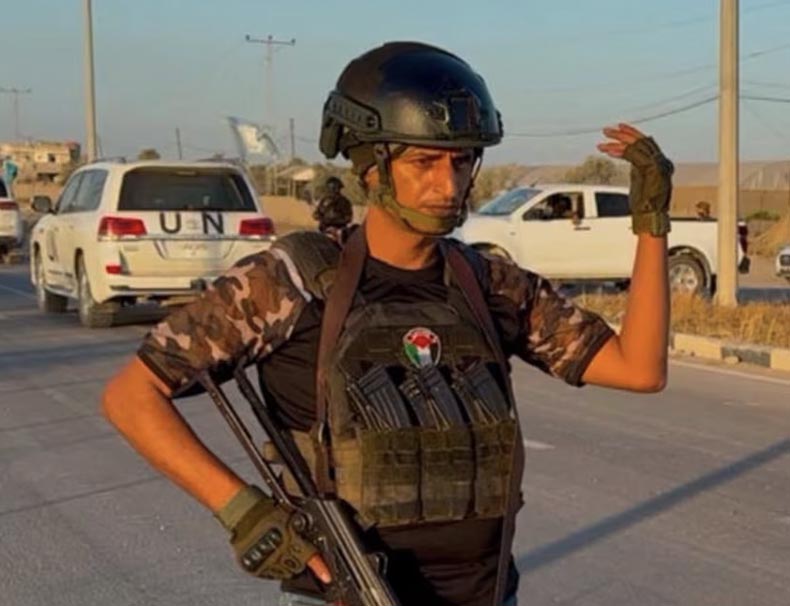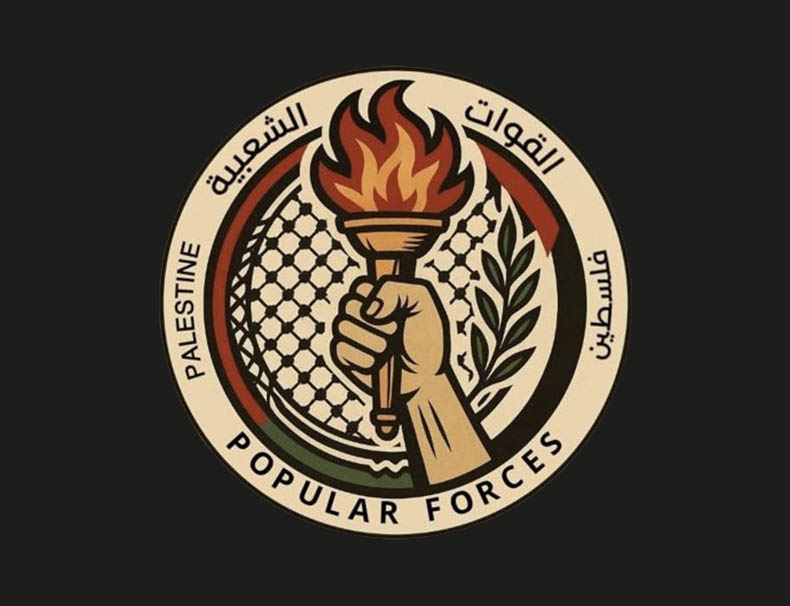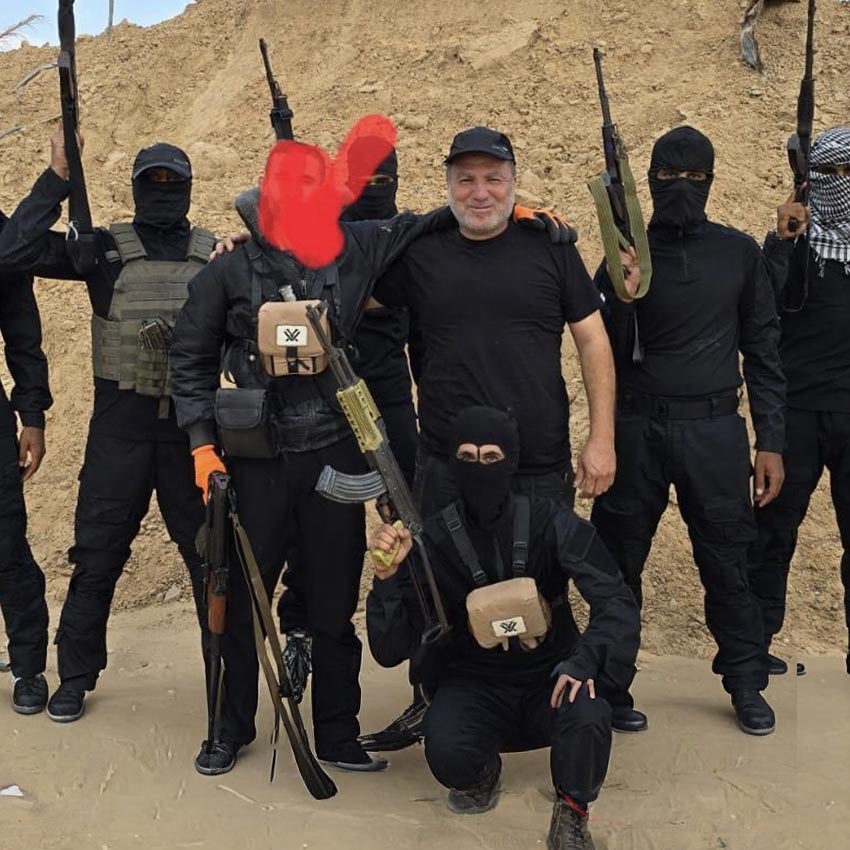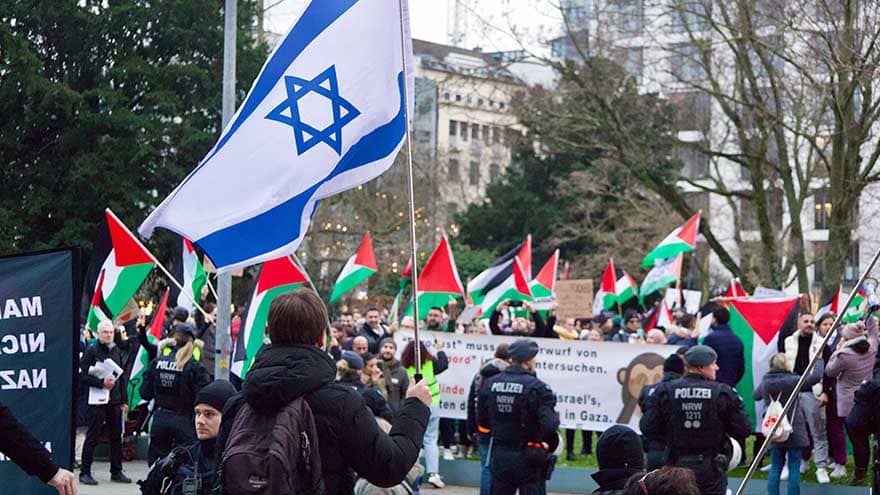In recent weeks, especially since the ceasefire and the return of hostages under the first phase of the “21 Points Agreement”, Arab and international media have revealed concrete information about the activity of armed Palestinian militias and clans receiving assistance from Israel in various parts of the Gaza Strip. Most of these militias operate in areas controlled by IDF forces, in the zone stretching north and east beyond the “yellow line”, positioning themselves as rivals to Hamas and as actors seeking its downfall both as a governing authority and as a military organization. They aim to promote the realization of a shared central goal reflected in the establishment of “New Gaza” under a single governing umbrella.
The largest militia currently operating in the Strip calls itself “The Popular Forces”, led by Yasser Abu Shabab. It operates in eastern Rafah and is estimated to number around 1,500 members, about 600 of whom are armed fighters, most of them formerly in Palestinian security agencies. Abu Shabab is a member of the Bedouin Tarabin tribe, whose people live not only in the Gaza Strip but also in Israel (mainly in the Tarabin community in the Negev and around Beersheba), in Egypt (eastern Sinai), in the West Bank, in Jordan, and in Saudi Arabia. After the outbreak of the Iron Swords War, Abu Shabab was released from prison in Gaza following an Israeli strike that killed the terror operatives guarding the inmates. He had been imprisoned on criminal grounds after being convicted of smuggling, theft, and drug trafficking.
Hamas falsely accused Abu Shabab’s militia of belonging to ISIS, even though members of the tribe in Sinai had fought for years against the Islamic State alongside the Egyptian army. The claim of Knesset member Avigdor Liberman that the militia is affiliated with ISIS is also baseless.
Over the past two years, Hamas attempted unsuccessfully to assassinate Abu Shabab. In January 2025, it executed one of its senior aides, and recently, its deputy, Rasan Dukhain, stated that “peace in the area while Hamas holds weapons is impossible”. Dukhain also warned that Hamas fighters often use ambulances to move between locations. He was filmed twice standing beside a vehicle with United Arab Emirates license plates, which may suggest assistance from that state. Hussein Abu Shabab, a relative of the militia leader, recently told Sky News that the militia has grown stronger in recent weeks and now operates with a force of roughly 3,000 fighters.
Assistance from the IDF and denials of ties with Israel
Another militia, led by Hossam al Astal, operates in Khan Yunis. Its leader previously served as an officer in the Palestinian Authority’s security forces and in 2022 was sentenced to death by Hamas for alleged involvement in the assassination of Fadi al Batsh, a Hamas operative and scientist, in Malaysia in 2018. Two months after the outbreak of the Iron Swords War, under the cover of an Israeli airstrike, al Astal managed to escape from the prison where he was held, similar to Abu Shabab.
Members of al Astal’s militia possess mainly light weapons (Kalashnikov rifles), which media reports say were purchased from former Hamas operatives on the black market. Ammunition and vehicles, according to foreign reports, were supplied by Israel and delivered through the Kerem Shalom crossing after coordination with IDF forces. The militia’s vehicles bear Hebrew markings, partially erased.
According to al Astal, his militia receives food, water, and equipment, and enjoys protection from IDF forces. He says he maintains coordination with the leader of the Abu Shabab militia, which controls areas in eastern Rafah and eastern Khan Yunis. Recently, media attention focused on al Astal’s militia after IDF forces struck a Hamas squad that had come to attack militia members in Khan Yunis. According to Palestinian media reports, more than 22 Hamas operatives were killed in the strike.
It is important to note that the Palestinian Authority recently denied statements previously attributed to al Astal about coordination between it and the militia he leads. He, in response, stressed that the Authority cannot admit such a link but acknowledged that the militia cooperates with Israel, although he denied coordinating military operations with the IDF.
Various media outlets also reported that Israeli fighter jets were involved in two battles fought by the militia. Hamas, for its part, accused it of maintaining direct military coordination with Israel after several of its operatives were killed when IDF forces intervened in a clash between Hamas and the militia on 3 October 2025. Earlier this year, in April, the tent where al Astal was living was hit by an Israeli airstrike. His daughter Nahad, aged 22 and seven months pregnant, was killed in that strike.

Bad blood since 2007
The Dughmush clan is also one of the strongest operating in the Strip, with its power base in the Tel al Hawa and Sabra neighborhoods of Gaza City. Some members of the clan were previously identified with extreme Salafi Islamist groups, foremost among them the “Army of Islam”, which engaged in violent clashes with Hamas operatives. Even so, in the past, there was cooperation between the Dughmush clan and Hamas, most notably in the abduction of IDF soldier Gilad Shalit in June 2006. At the outset of the Iron Swords War, Hamas executed the mukhtar of the Dughmush clan in the northern Strip, after media reports that Israel had been in contact with clan leaders to help receive and distribute humanitarian aid transferred to the population.
Recently, fifty-two members of the Dughmush clan were killed in violent clashes with Hamas, including twelve Hamas operatives, among them the son of senior official Bassem Naim. A few weeks ago, according to reports, the Israel Security Agency approached clan leaders in an attempt to recruit them to assist in implementing an Israeli plan to divide the Strip into areas controlled by local armed clans. The offer was rejected, and in a statement, the clan leaders declared that they had endured “brutal persecution by the Israeli occupation”, had paid a heavy price, but chose to stand with “honor and loyalty to the nation”.
In the Jabalia refugee camp and the town of Beit Lahiya in the northern Strip, as well as in the Sheikh Radwan neighborhood of Gaza City, a militia led by Ashraf al-Mansi operates. According to international media, its members cooperate with the militia of Yasser Abu Shabab, who announced that he is placing it under his protection. With this, al Mansi’s militia joins the two others opposing Hamas that operate in Rafah (under Abu Shabab’s leadership) and in Khan Yunis (under the leadership of Hossam al Astal). Hamas accused al-Mansi’s militia of running a network collaborating with Israeli intelligence and of killing Hamas operatives. It threatened that anyone joining it would be charged with treason and face the death penalty.
Rami Kheles led another militia operating in Gaza City. This is a large and influential clan associated with Fatah, with its power base in the Shuja’iyya neighborhood. Relations between the Kheles clan and Hamas have been hostile for many years, dating back to Hamas’s takeover of the Strip in June 2007. It is one of the most prominent clans in the Strip, with many of its members living in Shuja’iyya. Kheles himself resides in the Tel al Hawa neighborhood in southwestern Gaza City. He and his men hold large quantities of weapons and, according to media reports, receive protection from IDF forces.
A fighter in Kheles’s militia recently told Sky News that coordination between the militia and the IDF is carried out indirectly through Israeli security elements as well as through Palestinian Authority personnel. In practice, the clan is primarily identified with Fatah on the ground. One of its prominent members is Ahmed Kheles, known as Abu Maher, a member of Fatah’s Central Committee and the representative of Palestinian Authority President Mahmoud Abbas in the Strip. Hamas, for its part, claimed that the clan leader receives assistance from the Israel Security Agency, passes information to it about events on the ground, and was involved in killing Hamas operatives who had ambushed IDF forces in eastern Gaza City.
Channels affiliated with Hamas reported that members of another group, led by Ahmed Jundiya, surrendered in late September 2025 after being attacked by Hamas operatives. It was reported that Jundiya himself had previously served in the Palestinian Authority intelligence service and carried out missions in the Strip for the IDF, including intelligence gathering and house searches.

“A safe place without Hamas”
Israel provides military assistance to the various militias and clans operating in the Gaza Strip, especially by supplying limited military aid consisting mainly of Kalashnikov rifles taken as spoils of war from Hamas fighters. From Israel’s perspective, the activity of the militias serves as another means of exerting pressure on Hamas in the long-running confrontation in the Strip, and also as a forward-looking element regarding the situation in the “day after”. Under current circumstances, after implementing the first phase of the ceasefire agreement initiated by the American administration, Israel is obliged to provide protection and ensure the continued existence of the various militias operating in the Strip. Their continued activity forces Hamas to take them into account, divert resources to confront them, and prepare to act against them while also continuing its confrontation with Israel.
Hamas, for its part, views the militias operating against it, to one degree or another, in cooperation with Israel, as a direct threat aimed at undermining its continued rule in the Gaza Strip. As part of its struggle against the militias and clans, the organization attempted several weeks ago to assassinate Abu Shabab. Still, it failed, mainly because the militia leader is located, at this time, in an area under Israeli control. In a recent statement to the media, Abu Shabab’s militia expressed satisfaction with the ceasefire and the return of the Israeli hostages. Still, it emphasized its intention to continue holding territory in Rafah and to defend its land. In addition, it announced that its vision for the future of the Strip is to establish a “new administration” and turn it into “a safe place without Hamas, without war and without terror”.
Return of the traditional structures
The militias’ activity at this moment takes me back more than 30 years, to my military service in the Strip during the early days of the First Intifada, which erupted on December 9, 1987. A few days later, Musa Abu Shaaban, then head of the Association of Mukhtars in the Strip (the heads of the major clans who served as representatives of the population before the Israeli administration), arrived for a meeting in my office, which was located inside the Civil Administration compound in the heart of Gaza City. Abu Shaaban belonged to one of the region’s large and influential established families, and, unlike the typical appearance of the local Palestinian population, he stood out with his fair skin and ginger hair.
I remember that unusual, extraordinary meeting very clearly, because unlike our previous encounters, in which he consistently projected resolve and self-confidence, this time his appearance and expression conveyed profound weakness, frustration, and sadness. As tears ran down his face, he whispered that, after the outbreak of the Intifada, he felt he had lost his power and influence, and that those now taking the place of the mukhtars and leading the uprising on the ground were the younger generation. In that moment, unforgettable for me, he told me of a mocking attitude that was spreading among the population toward the mukhtars, who were increasingly seen as relics of the past. According to him, the question “What is a mukhtar?” was answered with “Someone whose mind has flown away.”
This comment on the shift in the status of the mukhtars required no explanation. It was a humorous remark that captured the new trends of social mobility and the profound change the Intifada had brought about in the standing of the old traditional power centers. Influence and authority were shifting from the conventional leadership represented by the mukhtars, members of the aging older generation, to the younger, energetic, and militant generation, which was rapidly establishing itself as the one setting the tone and shaping the course of events and forms of protest on the ground.
The activity of the militias and clans under current circumstances in the Gaza Strip reflects a renewed expression of the almost forgotten status of traditional social frameworks, which appear to retain their relevance in today’s social reality in the Strip.
In light of all this, Israel must engage with the various militias and clans in the Strip according to the principle of respecting them while remaining cautious. On the one hand, they unequivocally position themselves as rivals to Hamas and as opponents of its continued rule in the Gaza Strip, compelling the organization to prepare for the threat they pose. On the other hand, Israel must remain vigilant, maintain ongoing monitoring, and keep its finger on the pulse to address possible scenarios in which the militias’ posture or positions shift. Such a change may result from internal pressures or ideological transformations, and could ultimately be characterized by a reversal in which their activity turns against Israel.








